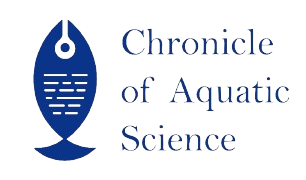| File | Action |
|---|---|
| CoAS_V1IS7_05 | Download |
- 919088951040 call us
- chronicleofaquaticscience@gmail.com Mail us
CoAS_V1IS7_05
Popular Article
Environment-friendly Chitosan Nanoparticles and its Application
Kamlesh Kumar Dhritlahre* and Bharti Sahu
Abstract
The shellfish processing industry produces a huge amount of waste which causes environmental problems if discarded. This waste can be effectively utilized to produce valuable byproducts such as chitin and its derivatives including chitosan nanoparticles. When chitin is alkaline deacetylated, a naturally occurring harmless biopolymer called chitosan is created. It is composed of dglucosamine and N-acetyl-d-glucosamine units connected by (β1–4) glycosidic linkages. The primary limitation preventing chitosan from becoming utilized in living systems is that it is insoluble in water. Promising bio-based and polymeric nanoparticles are chitosan nanoparticles. This material can be prepared using the following techniques: molecular self-assembly, interfacial cross- linkage, ionotropic gelation, coacervation/precipitation, template polymerization, and reverse micelles. Due to its low size, solubility, surface area, and biological characteristics, this material can be used for various applications including antimicrobial agents, wastewater treatment, drug delivery, encapsulation, plant protection, and plant growth-promoting agents, etc.
Keywords
Shrimp shell waste, Polymer, Chitosan nanoparticle, Antibacterial agent.
References
Yan, N., & Chen, X. (2015). Sustainability: Don't waste seafood waste. Nature, 524(7564), 155-157.
Dayakar, B., Xavier, K. M., Das, O., Porayil, L., Balange, A. K., & Nayak, B. B. (2021). Application of extreme halophilic archaea as biocatalyst for chitin isolation from shrimp shell waste. Carbohydrate Polymer Technologies and Applications, 2, 100093.
Yen, M. T., Yang, J. H., & Mau, J. L. (2008). Antioxidant properties of chitosan from crab shells. Carbohydrate polymers, 74(4), 840-844.
Dayakar, B., Xavier, K. M., Ngasotter, S., Layana, P., Balange, A. K., Priyadarshini, B., & Nayak, B. B. (2022). Characterization of spray-dried carotenoprotein powder from Pacific white shrimp (Litopenaeus vannamei) shells and head waste extracted using papain: Antioxidant, spectroscopic, and microstructural properties. LWT, 159, 113188.
López-León, T., Carvalho, E. L. S., Seijo, B., Ortega-Vinuesa, J. L., & BastosGonzález, D. (2005). Physicochemical characterization of chitosan nanoparticles: electrokinetic and stability behavior. Journal of colloid and interface science, 283(2), 344-351.
Peter, M. G., Kegel, G., & Keller, R. (1986). Structural studies on sclerotized insect cuticle. In Chitin in nature and technology (pp. 21-28). Boston, MA: Springer US. Rinaudo, M. (2006). Chitin and chitosan: Properties and applications. Progress in polymer science, 31(7), 603-632.
Qi, L., Xu, Z., Jiang, X., Hu, C., & Zou, X. (2004). Preparation and antibacterial activity of chitosan nanoparticles. Carbohydrate research, 339(16), 2693-2700.
Grenha, A. (2012). Chitosan nanoparticles: a survey of preparation methods. Journal of drug targeting, 20(4), 291-300.
Perera, U. M. S. P., & Rajapakse, N. (2013). Chitosan nanoparticles: preparation, characterization, and applications. In Seafood processing by-products: Trends and applications (pp. 371-387). New York, NY: Springer New York.
Ghadi, A., Mahjoub, S., Tabandeh, F., & Talebnia, F. (2014). Synthesis and optimization of chitosan nanoparticles: Potential applications in nanomedicine and biomedical engineering. Caspian journal of internal medicine, 5(3), 156.
Dzung, N. A., Khanh, V. T. P., & Dzung, T. T. (2011). Research on impact of chitosan oligomers on biophysical characteristics, growth, development and drought resistance of coffee. Carbohydrate polymers, 84(2), 751-755.
Chandra, S., Chakraborty, N., Dasgupta, A., Sarkar, J., Panda, K., & Acharya, K. (2015). Chitosan nanoparticles: a positive modulator of innate immune responses in plants. Scientific reports, 5(1), 15195.
De Moura, M. R., Aouada, F. A., AvenaBustillos, R. J., McHugh, T. H., Krochta, J. M., & Mattoso, L. H. (2009). Improved barrier and mechanical properties of novel hydroxypropyl methylcellulose edible films with chitosan/tripolyphosphate nanoparticles. Journal of Food Engineering, 92(4), 448-453.
Maghami, M., Motalebi, A. A., & Anvar, S. A. A. (2019). Influence of chitosan nanoparticles and fennel essential oils (Foeniculum vulgare) on the shelf life of Huso huso fish fillets during the storage. Food science & nutrition, 7(9), 3030-3041.
Wang, Y., Liu, L., Zhou, J., Ruan, X., Lin, J., & Fu, L. (2015). Effect of chitosan nanoparticle coatings on the quality changes of postharvest whiteleg shrimp, Litopenaeus vannamei, during storage at 4 C. Food and Bioprocess Technology, 8, 907-915.
Jang, K. I., & Lee, H. G. (2008). Stability of chitosan nanoparticles for L-ascorbic acid during heat treatment in aqueous solution. Journal of agricultural and food chemistry, 56(6), 1936-1941. Rajendran, R., Abirami, M., Prabhavathi, P., Premasudha, P., Kanimozhi, B., & Manikandan, A. (2015). Biological treatment of drinking water by chitosan based nanocomposites. African journal of biotechnology, 14(11), 930-936.
Abul, A., Samad, S., Huq, D., Moniruzzaman, M., & Masum, M. (2015). Textile dye removal from wastewater effluents using chitosan-ZnO nanocomposite. J. Text. Sci. Eng, 5(3).
- Published online
- 12th December, 2023
How to Cite the Article
Dhritlahre, K. K. and Sahu, B. 2023. Environment-friendly Chitosan Nanoparticles and its Application. Chronicle of Aquatic Science 1(7): 22-26.
Copyright
This is an open-access article distributed under the terms of the Creative Commons Attribution License (CC BY). The use, distribution or reproduction in other forums is permitted, provided the original author(s) and the copyright owner(s) are credited and that the original publication in this journal is cited, in accordance with accepted academic practice. No use, distribution or reproduction is permitted which does not comply with these terms.

CoAS_V1IS7_05


